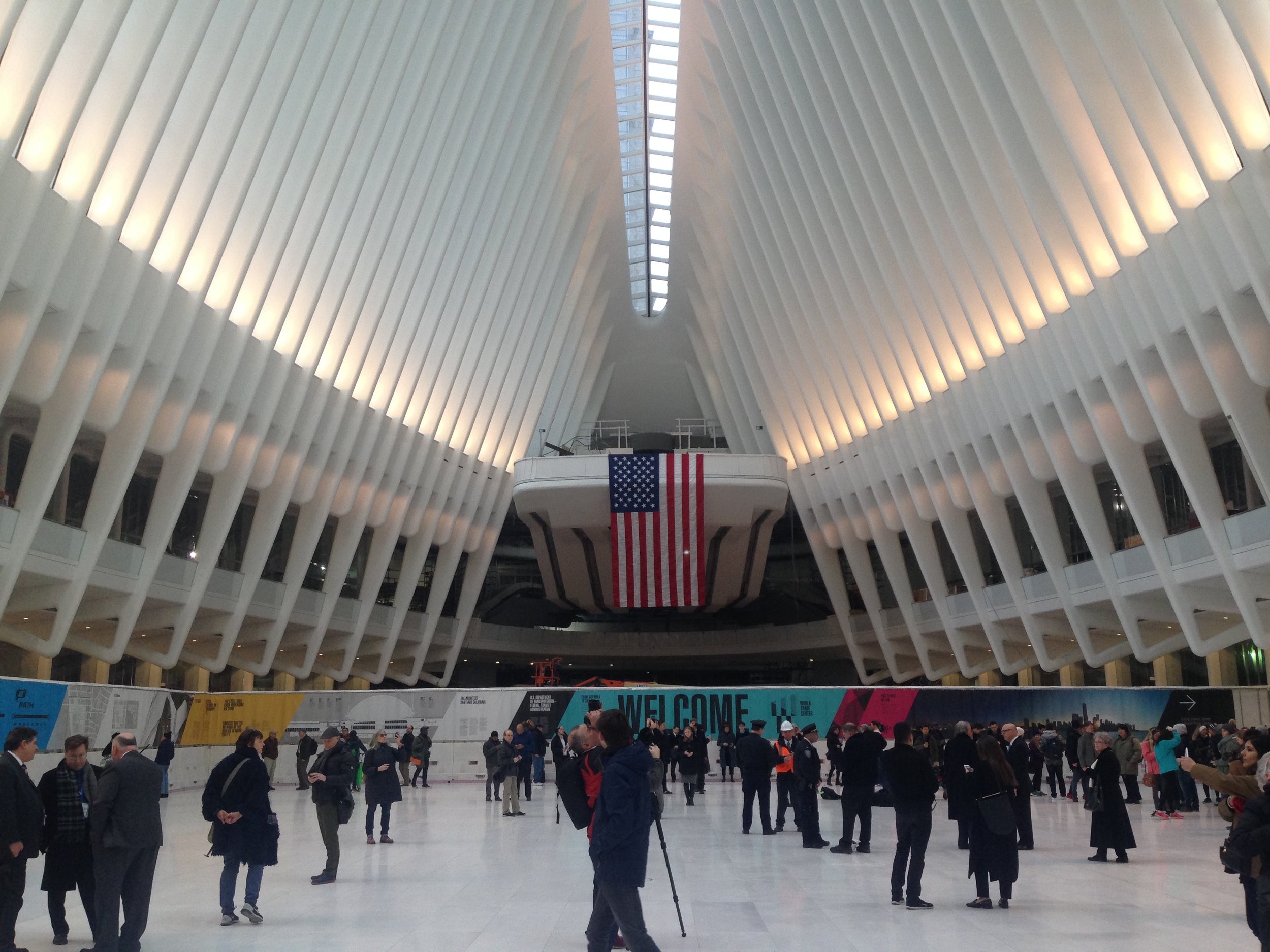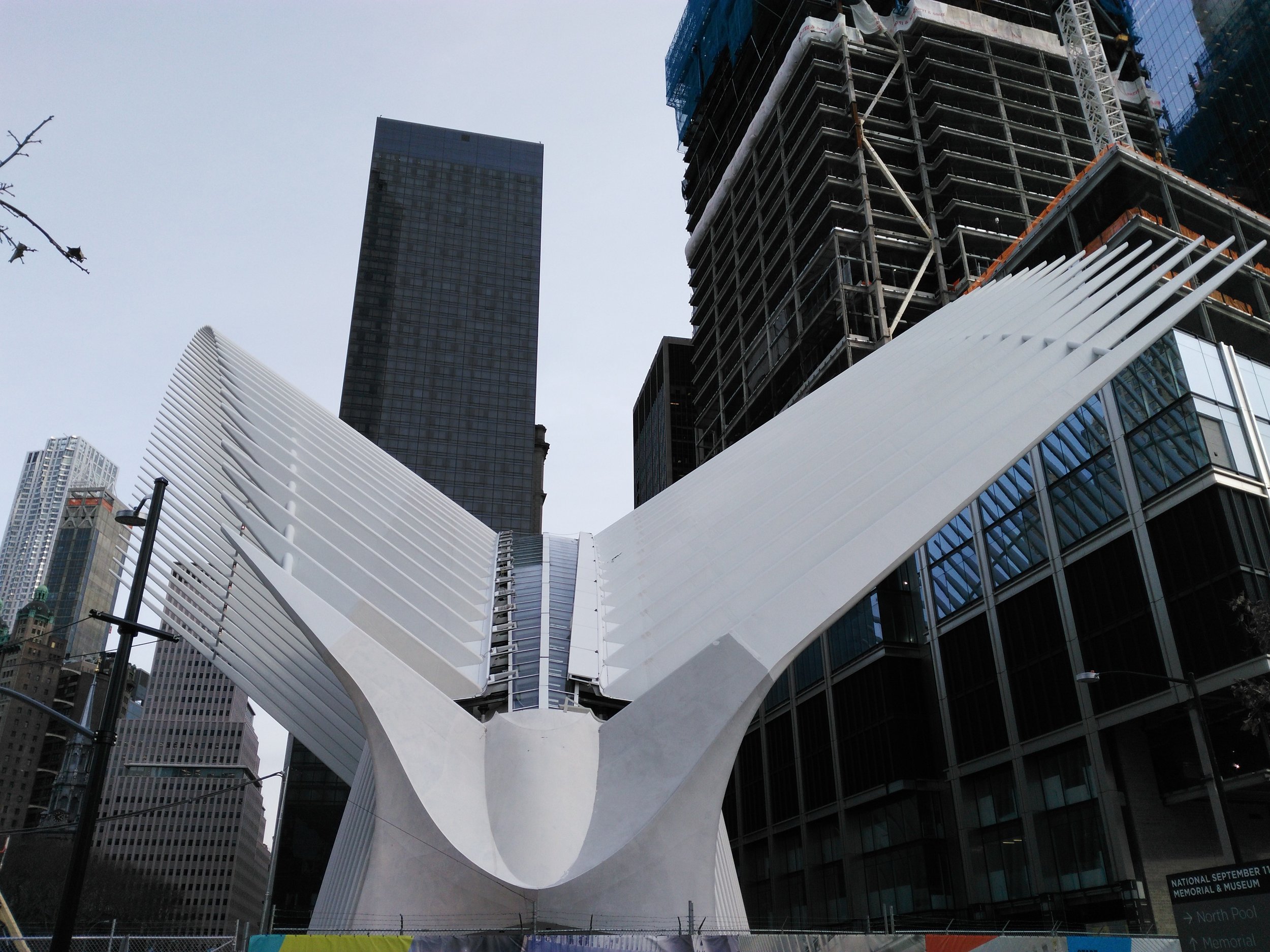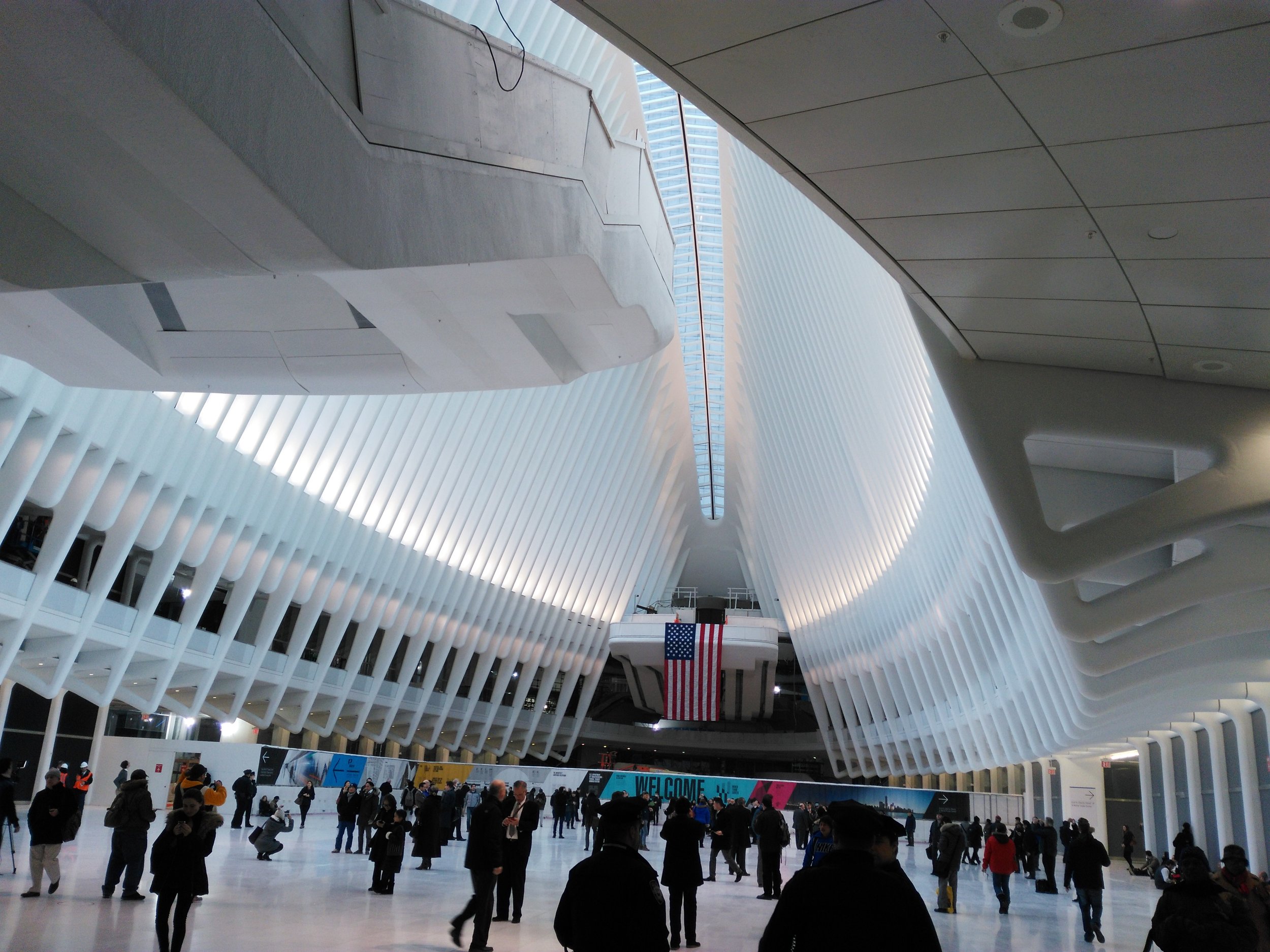World Trade Center Transportation Hub Opens to Public

At three in the afternoon yesterday the World Trade Center Transportation Hub, also known as the Oculus, opened to the public.

The opening of the Oculus, designed by Spanish architect Santiago Calatrava, took place 12 years after the initial unveiling of the Oculus' design in 2004 and seven years after its scheduled opening in 2009. The project's construction cost roughly $4 billion, nearly twice the initial estimate of $2.2 billion. There was no ceremony to mark the opening.
On opening day, tourists, reporters and other curious passersby walked into the Oculus' entrance at the intersection of Liberty St. and Church St., walking through several hundred feet of tunnels before arriving at the ribbed dome of the Oculus. People marveled and snapped photos of the newly minted white interior. One woman took advantage of the slippery marble floors by performing a dance routine.
Currently only a portion of the Hub is open: the second level, which will house retail stores and restaurants, is still under construction. Much like Fulton Center nearby -- whose first shops opened in January, over a year after the opening of the Center itself in November 2014 -- the Oculus will spend some time as an architectural attraction and transit hub before transforming into a full-fledged commercial center. Retail locations are scheduled to open in the Oculus later this spring.

The Oculus connects the PATH train directly to Four World Trade Center, so passengers can go from one to the other without having to step into the cold of the New York City winter. Eventually, the Oculus will also connect to the 1, E and R subway lines, as well as to Brookfield Place, One World Trade Center and Fulton Center, where riders can access even more subway lines.
In addition to being a transportation hub and future commercial center, the Oculus is one of the largest indoor public spaces in downtown Manhattan and will likely be a prime destination for tourists, who already visit the neighboring 9/11 Memorial in droves. The Oculus is somewhat smaller than Grand Central Station, ranking as the third largest transportation center in the city.

